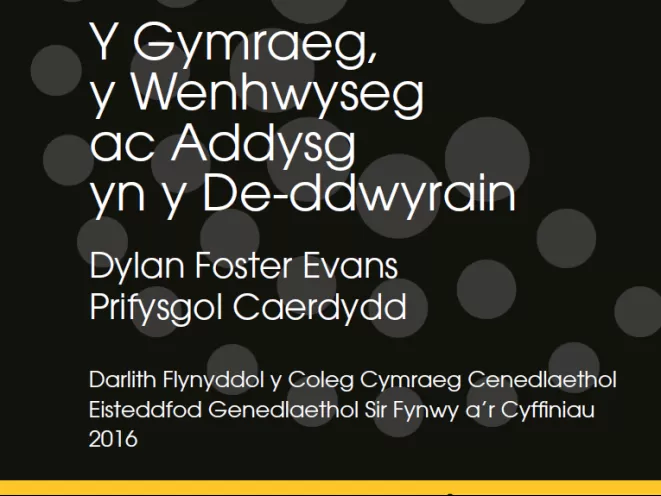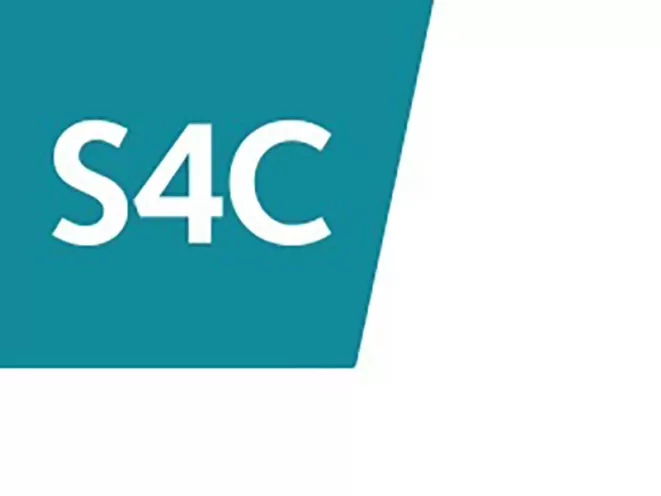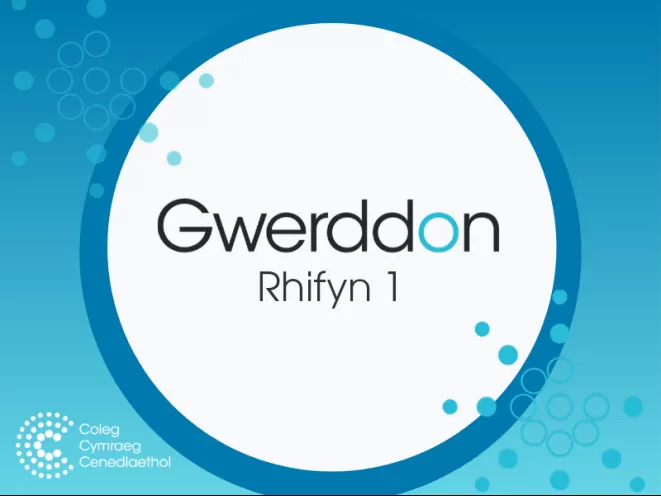This is a collection of tasks that can be used to develop and assess the language skills of education practitioners against the Language Competency Framework for Education Practitioners. The collection includes tasks for each skill and each level within the Framework. There is a PDF booklet for each level, containing all of the tasks for that selected level. In addition, the tasks are available to download individually in the form of Word documents. If the links do not open the document in a new tab, then the document will have downloaded (look in the downloads folder on your computer).
Tasks to develop and assess Teachers' Language Skills
Google Classroom Guidance
Guidance on the use of Google Classroom as produced by Grwp Llandrillo Menai.
Darlith Flynyddol 2016: Y Gymraeg, y Wenhwyseg ac Addysg yn y De-ddwyrain
Darlith Flynyddol y Coleg Cymraeg Cenedlaethol 2016: Y Gymraeg, y Wenhwyseg ac Addysg Gymraeg yn y De-ddwyrain gan Dylan Foster Evans. Traddodwyd y ddarlith yn Eisteddfod Genedlaethol Sir Fynwy a'r Cyffiniau ar ddydd Mawrth 2 Awst 2016.
#Fi: Ben a Hollie (2013)
Cyfres ddogfen i bobl ifanc. Mae Ben yn 'sgrifennu blog ar ei wefan er mwyn rhannu ei brofiad o fod â chwaer awtistig. Mae her fawr yn ei wynebu fe a'i chwaer wrth iddyn nhw helpu i drefnu cyngerdd arbennig i godi arian tuag at awtistiaeth. Boom Cymru, 2013. Oherwydd rhesymau hawlfraint bydd angen cyfrif Coleg Cymraeg i wylio rhaglenni Archif S4C. Mae modd ymaelodi ar wefan y Coleg Cymraeg Cenedlaethol i gael cyfrif.
Adroddiad Swan-Linx Cymru ar iechyd a lles plant ysgol
Dyma adroddiad sy'n deillio o waith Prifysgol Abertawe ar brosiect Swan-Linx, prosiect iechyd a ffitrwydd sydd â'r nod o ymchwilio i iechyd a lles plant ysgol ym mlynyddoedd 5 a 6 (9-11 oed). Mae'r adroddiad yn seiliedig ar ddata a gasglwyd drwy gyfrwng: Arolwg iechyd ar y we o'r enw CHAT (Child Health and Activity Tool) sy'n gofyn cwestiynau am ymddygiadau iechyd gwahanol gan gynnwys diet, gweithgaredd corfforol, cwsg a lles. Diwrnod Hwyl Ffitrwydd, lle cafodd BMI (Mynegai Màs y Corff), ffitrwydd aerobig, cyflymder, cryfder, ystwythder, p?er, a hyblygrwydd yn cael eu mesur. Ariannwyd y gwaith cyfrwng Cymraeg gyda chymorth grant bach gan y Coleg Cymraeg Cenedlaethol.
Cefnogi Pob Plentyn (gol. Nanna Ryder)
Nod y gyfrol hon yw cyflwyno rhai pynciau perthnasol mewn cyd-destun Cymraeg a Chymreig i fyfyrwyr sydd yn astudio Graddau Sylfaen yn y maes addysg a gofal. Nid canllaw arfer dda a geir yma ond yn hytrach fraslun o bolisïau, athroniaeth ac ymarfer cyfredol. Caiff pynciau penodol eu trafod ym mhob pennod ac mae’r rhain yn amrywio o ddatblygiad, hawliau, lles a diogelu plant i gynhwysiant, Anghenion Dysgu Ychwanegol, a chwarae a chreadigrwydd.
(The nature of language acquisition processes in children: Marking grammatical gender in Welsh)
Research on the acquisition of grammatical gender has shown that in many languages children gain an early command of gender. Often in these languages gender marking is quite overt and provides a clear one-to-one correspondence between a marker and the gender encoded. In Welsh, however, gender marking is more complex. It is marked by mutations, a set of morpho-phonological changes that affect the initial consonants of words, and the mapping between mutation and gender is quite opaque. Two mutation types are used to mark feminine gender: both feminine nouns modified by the definite article and adjectives following feminine nouns undergo soft mutation, and the feminine gender of the possessive adjective ‘ei’ is marked by aspirate mutation of the modified noun. This paper presents two studies that examine children’s and adults’ productive command of gender as expressed in the mutation of nouns modified by the definite article, and adjectives modifying nouns. Children, between the ages of 4½ and 9 years old, and adults were invited to take part in the studies. First, a semi-naturalistic study was conducted to obtain knowledge about speakers’ usage of gender marking. A Cloze procedure was then used to elicit speakers’ production of masculine and feminine forms, with both real words and nonsense forms, in a variety of linguistic contexts. Some of these contexts provided cues to gender status, some did not. The data obtained indicated that the acquisition of the Welsh gender system is a long drawn-out process, and children have not mastered the system even by 9 years of age. Welsh speakers, even in adulthood, pay little or no attention to the possible cues present in the input. Results suggest that when a language has a complex gender system that is marked by opaque morpho-phonological processes the course of development is protracted and variable.
Gloywi Iaith
Cyfres o adnoddau hylaw i loywi iaith ar gyrsiau hyfforddi cychwynnol athrawon. Gall y deunydd gael ei ddefnyddio gan athrawon newydd gymhwyso ac athrawon profiadol i wirio adnoddau a chynlluniau gwersi.
An analysis of the use of code-switching by student teachers in a bilingual Secondary School class: A case fro...
The literature contains many studies on code-switching. The socio-cultural method of studying networking in the classroom as described by Mercer (2000) is based on a detailed analysis of the discourse of language classes. Mercer noted a number of linguistic techniques used by teachers. This article analyses the views of trainee-teachers on code-switching as a practice in the classroom. In the study, the class practice of two trainee teachers, bilingual in Welsh and English, was examined. The two were observed and their teaching recorded. Interviews were also held with the trainee teachers to ask them about their attitudes to the use of the first language in a secondary-school class where English is a second language. The collected data is analysed using Critical Discourse analysis methods. Specific consideration is given to what extent the trainee teachers succeeded in teaching in a way that was within the attainment of the bilingual pupils under their care. The occasions when the teachers switched from English to Welsh for a minute could be seen to correspond to the code-switching functions noted by Camilleri. The code-switching suggests a legitimate way of using common linguistic resources as a teaching support in the classroom.
Llawlyfr Creadigedd yn yr ysgol gynradd
Datblygwyd y llawlyfr ar-lein yma gan Brifysgol Cymru: Y Drindod Dewi Sant. Mae’n cyflwyno a thrafod prif elfennau creadigrwydd yn yr ysgol gynradd ar gyfer ymarferwyr y Cyfnod Sylfaen a Chyfnod Allweddol 2. Mae’r llawlyfr yn ymateb i ddatblygiadau polisi Llywodraeth Cynlluniad Cymru ac yn cynnig arweiniad ar sut i baratoi, creu, cynllunio, datblygu, trefnu ac asesu gweithgareddau dysgu ‘creadigedd’ o ansawdd uchel.
Basics of Bilingual Teaching app
This app helps teachers to give everyone the opportunity to use their chosen language in the classroom.












